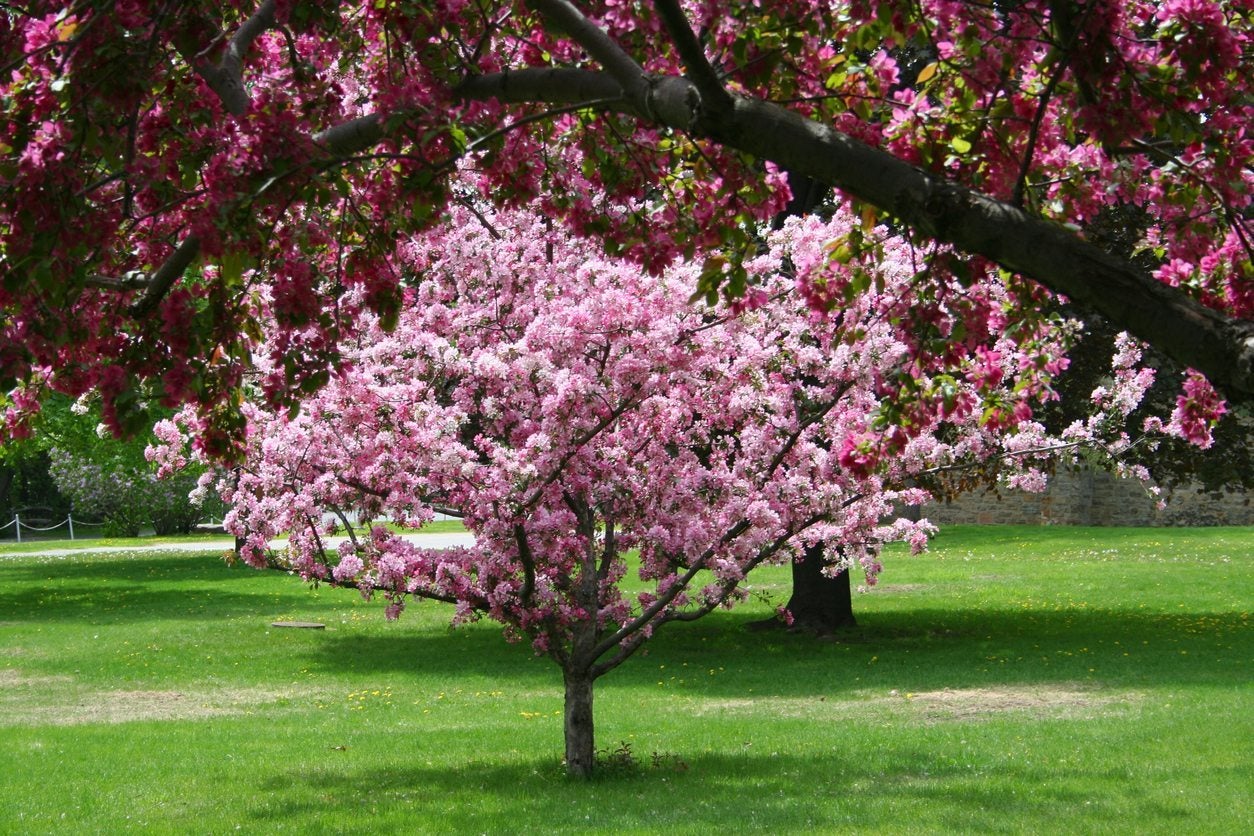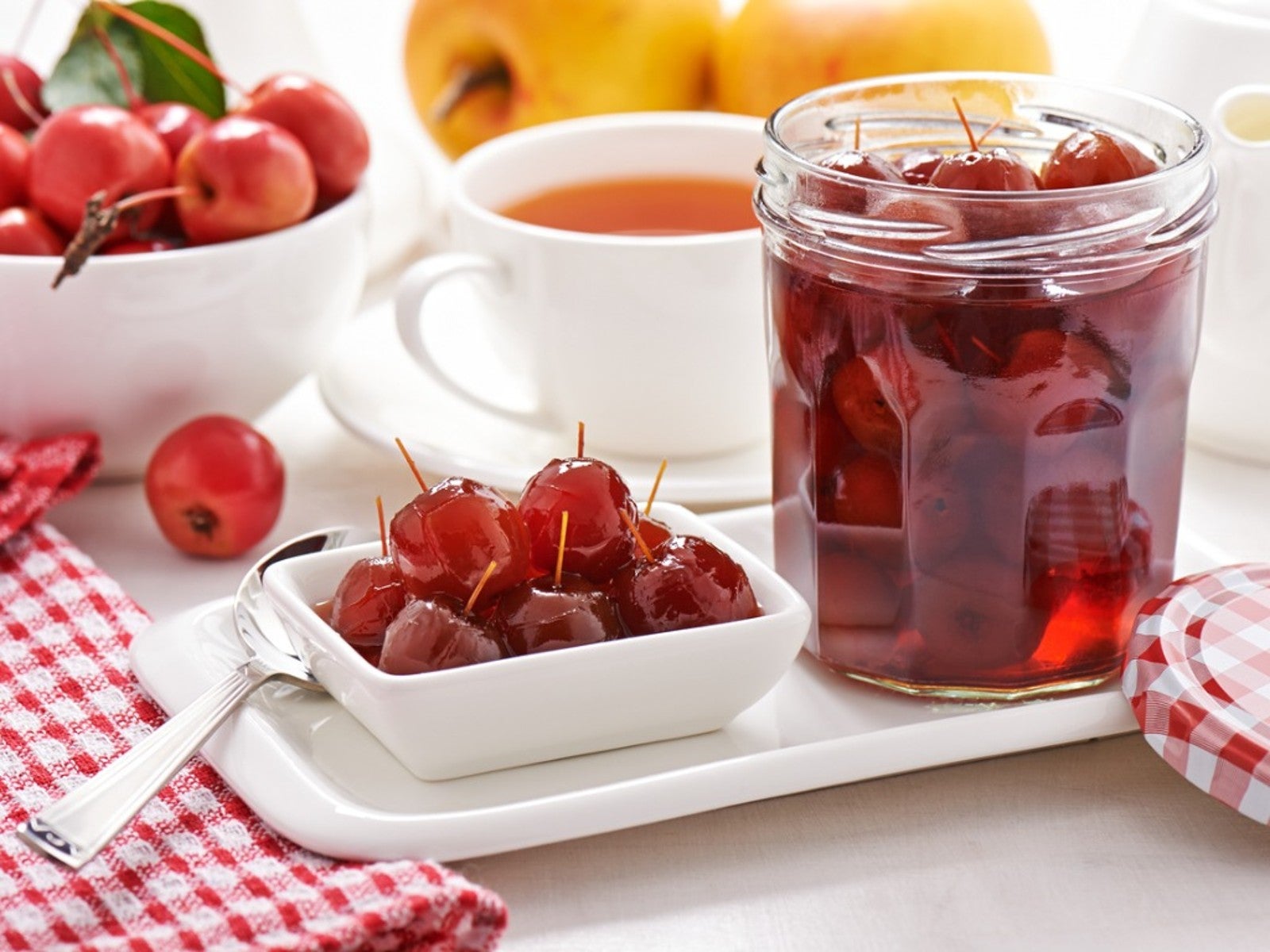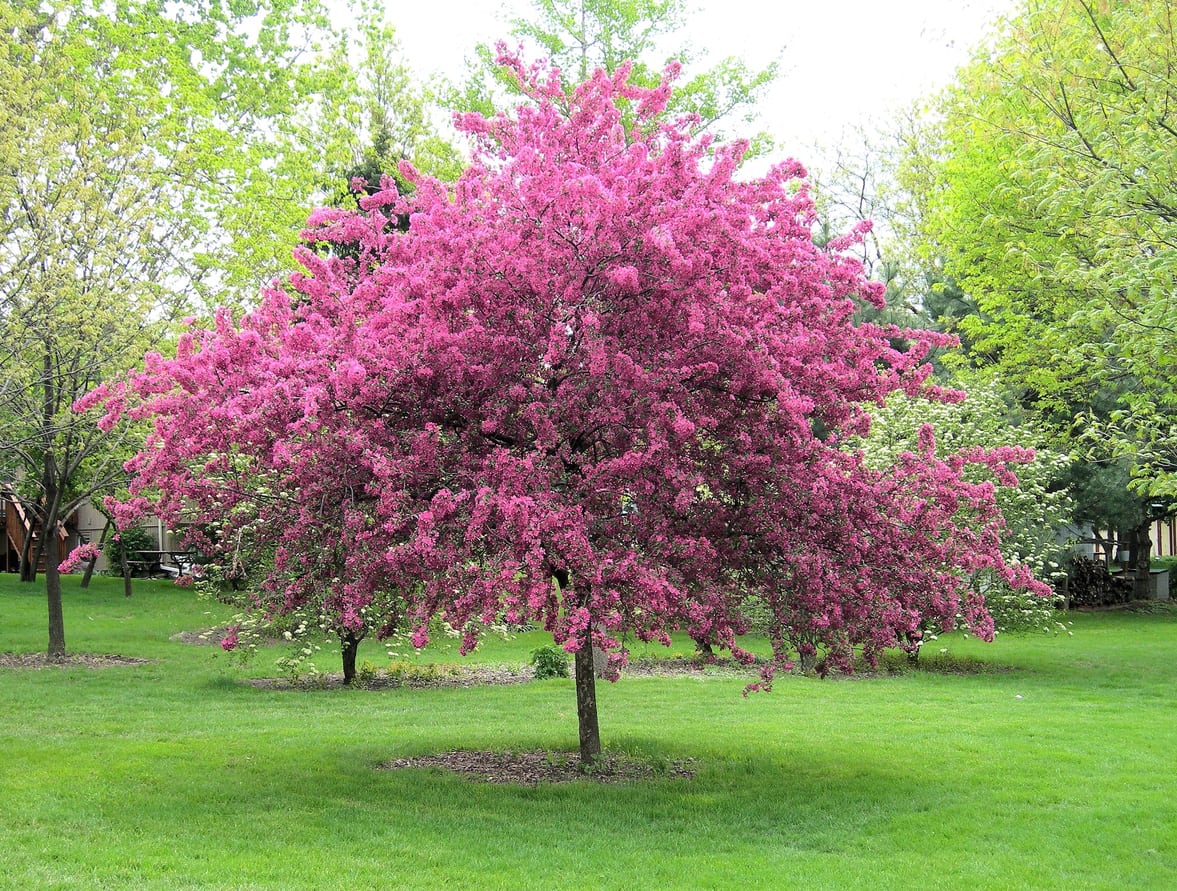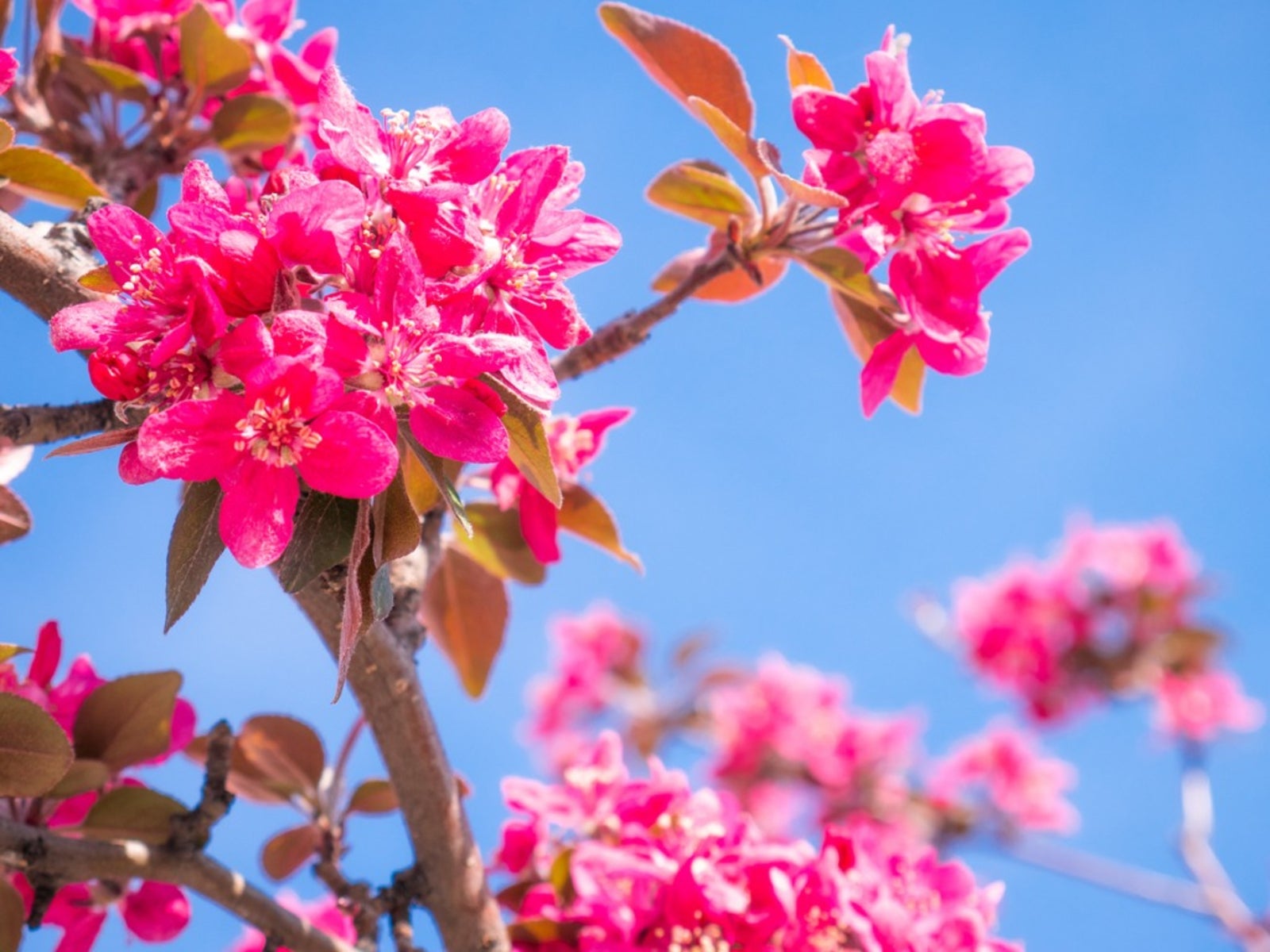Transplanting Crabapples: How To Transplant A Crabapple Tree


Moving a crabapple tree isn’t easy and there are no guarantees of success. However, transplanting crabapples is certainly possible, especially if the tree is still relatively young and small. If the tree is more mature, it may be best to start over with a new tree. If you’re determined to give it a try, read on for tips on crabapple transplanting.
When to Transplant Crabapple Trees
The best time for moving a crabapple tree is when the tree is still dormant in late winter or very early in spring. Make it a point to transplant the tree before bud break.
Before Transplanting Crabapples
Ask a friend to help; moving a crabapple tree is much easier with two people. Prune the tree well, trimming branches back to nodes or new growth points. Remove deadwood, weak growth, and branches that cross or rub on other branches. Place a piece of tape on the north side of the crabapple tree. This way, you can ensure the tree faces the same direction once placed in its new home. Prepare the soil in the new location by cultivating the soil well to a depth of at least 2 feet (61 cm.). Be sure the tree will be in full sunlight and that it will have good air circulation and ample space for growth.
How to Transplant a Crabapple Tree
Dig a wide trench around the tree. As a general rule, figure about 12 inches (31 cm.) for each 1 inch (2.5 cm.) of trunk diameter. Once the trench is established, continue to dig around the tree. Dig as deeply as you can to avoid damage to the roots. Work the shovel under the tree, then lift the tree carefully onto a piece of burlap or a plastic tarp and slide the tree to the new location. When you’re ready for the actual crabapple tree transplanting, dig a hole in the prepared site at least twice as wide as the root ball, or even larger if the soil is compacted. However, it’s important that the tree be planted at the same soil depth as in its previous home, so don’t dig deeper than the root ball. Fill the hole with water, then put the tree in the hole. Fill in the hole with removed soil, watering as you go to eliminate air pockets. Tamp the soil down with the back of a shovel.
Care After Moving a Crabapple Tree
Create a water-holding basin around the tree by building a berm about 2 inches (5 cm.) high and 2 feet (61 cm.) from the trunk. Spread 2 to 3 inches (5-8 cm.) of mulch around the tree, but don’t allow the mulch to pile against the trunk. Smooth out the berm when the roots are well established – usually about a year. Water the tree deeply a couple of times per week, decreasing the amount by about half in autumn. Don’t fertilize until the tree is established.
Gardening tips, videos, info and more delivered right to your inbox!
Sign up for the Gardening Know How newsletter today and receive a free copy of our e-book "How to Grow Delicious Tomatoes".

A Credentialed Garden Writer, Mary H. Dyer was with Gardening Know How in the very beginning, publishing articles as early as 2007.
-
 Terrifically Tubular Flowers For Hummingbirds: 9 Tube-Flowered Plants To Attract Hummers
Terrifically Tubular Flowers For Hummingbirds: 9 Tube-Flowered Plants To Attract HummersGrowing tubular flowers for hummingbirds helps you create the optimum feeding conditions for your winged friends. Here are nine tubed delights for hummers
By Tonya Barnett
-
 How To Grow Hydroponic Tomatoes For Fresh Indoor Harvests – No Soil Required
How To Grow Hydroponic Tomatoes For Fresh Indoor Harvests – No Soil RequiredLearning how to grow tomatoes in water is easy and allows you to harvest fresh-home-grown produce in every season without any mess.
By Ellen Wells
-
 Crabapples Recipe Ideas To Add To Your Thanksgiving Menu
Crabapples Recipe Ideas To Add To Your Thanksgiving MenuCrabapple preserves make a delightfully tart treat. Learn here how to make a simple crabapple jelly.
By Bonnie L. Grant
-
 Weeping Crabapple Pruning – Tips For Trimming A Weeping Crabapple
Weeping Crabapple Pruning – Tips For Trimming A Weeping CrabappleTrimming a weeping crabapple is essential to keeping it healthy and blooming. If you are wondering how to prune a weeping crabapple, read on for info and tips.
By Teo Spengler
-
 Crabapple Feeding Requirements: Learn How To Fertilize A Crabapple Tree
Crabapple Feeding Requirements: Learn How To Fertilize A Crabapple TreeFlowering crabapple is a popular ornamental tree that many people choose for landscaping for the attractive shape, spring flowers, and low-maintenance needs. Despite its hands-off nature, feeding a crabapple may be necessary to promote growth and health. Learn more here.
By Mary Ellen Ellis
-
Ralph Shay Crabapple Care: Growing A Ralph Shay Crabapple Tree
Ralph Shay crabapple trees are mid-sized trees with dark green leaves and an attractive rounded shape. These crabapples are on the large side and are suitable for growing in USDA plant hardiness zones 4 through 8. Click this article to learn more about them.
By Mary H. Dyer
-
 Royal Raindrops Crabapples – Learn About Growing A Royal Raindrops Tree
Royal Raindrops Crabapples – Learn About Growing A Royal Raindrops TreeRoyal Raindrops flowering crabapple is a newer crabapple variety with bold pinkish-red flowers in spring and dark green leaves that turn a bright coppery red in autumn. Interested in growing a royal raindrops tree in your garden? Click here for more information.
By Mary H. Dyer
-
Adams Crabapple As A Pollinizer: Tips For Growing An Adams Crabapple Tree
Beautiful the tree may be, but there is another important reason for growing an Adams crabapple; it is a great choice for pollinating other varieties of apple. Click here to find out how to grow an Adams crabapple and information about Adams crabapple care.
By Amy Grant
-
 Spring Snow Crabapple Care: How To Grow A Spring Snow Crabapple Tree
Spring Snow Crabapple Care: How To Grow A Spring Snow Crabapple TreeIf you are looking for a fruitless crabapple tree, you might want to think about growing "Spring Snow" crabapples. Click on the article that follows for tips on how to grow a "Spring Snow" crabapple and other information.
By Teo Spengler
-
Camzam Apple Info: Learn About Camelot Crabapple Trees
Even if you lack a large garden space, you can still grow one of the many dwarf fruit trees such as the Camelot crabapple tree. Find out how to grow a Camelot crabapple and other Camzam apple info related to Camelot crabapple care in this article.
By Amy Grant